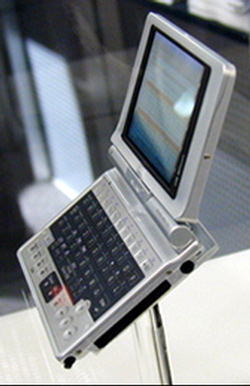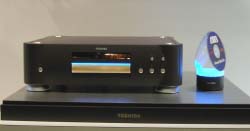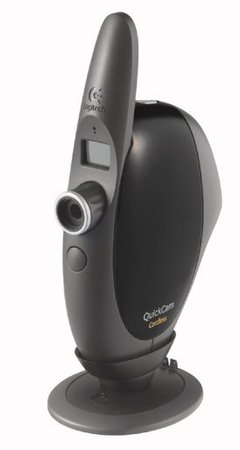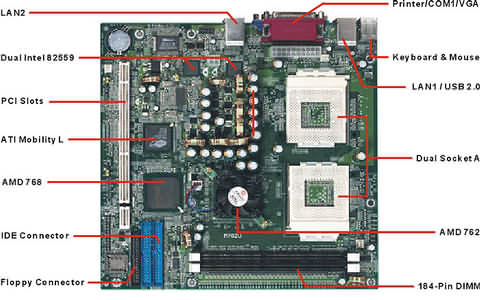 |
||
|
||
| ||
Microsoft announces new keyboards CEATEC: Matsushita announces 1GB Secure Digital cards CEATEC: Toshiba showcases new-genetation DVD system Logitech announces QuickCam Cordless IPoX announces a dual-CPU Socket A MicroATX mobo GDDR-III: new DRAM standard for graphics cards Today at Ceatec 2002 Sharp showcased a new generation of its Linux-based Zaurus PDAs. They feature VGA (640È480) resolution and fold like Sony CLIE PEG-NR and PEG-NX.  Approximate dimensions are 85È120 mm. The D-pad of SL-5500 is replaced with four arrow keys, similar to a desktop keyboard. The new Zaurus is expected for sale late this year, the price is yet unknown. Source: InfoSync
Microsoft announces new keyboards Microsoft announced four bew keyboards, including two PS/2 and two wireless, to be sold from October 25. They are designed for Windows 98/Me/NT4.0(SP6a)/2000/XP. Wireless products can be connected via USB and to Mac OS 8.6 — 9.x/Mac OS X 10.1.2 computers.  The first one, Wireless Optical Desktop Pro, features special my document, my picture, my music buttons, some audio player and some more special buttons. Its price will be 12800 yens ($110).
   The next one, Wireless Optical Desktop, will cost 9800 yens ($82) and more, and two usual keyboards: Natural MultiMedia Keyboard and MultiMedia Keyboard — 6800 and 3800 yens ($57 and $32). Source: PC Watch
CEATEC: Matsushita announces 1GB Secure Digital cards At CEATEC JAPAN 2002 Matsushita Electric announced a working prototype of 1GB SD (Secure Digital) card.The novelty is the first of SD line to feature new high-speed inteface, enabling up to 20 MB/s data transfers, doubling the throughput of current 256MB and 512MB SD cards performance and 10 times surpassing 128MB cards.
 First, Matsushita plans to cut card´s cost price and only then volume-produce it, so you won´t see it for a year. Further, Matsushita plans to release 2GB SD cards in about 2004, and 4, 8, and 16 GB cards in 2005 and later. Source: IDG
So, as this news is just to support earlier information, please read the previous news about this standard. Again, GDDR3-based graphics cards are expected in 2003.
CEATEC: Toshiba showcases new-genetation DVD system At CEATEC JAPAN 2002 Toshiba announced the first new-generation DVD system, temporary called "Advanced Optical Disk", which specs were jointly developed by Toshiba and NEC. The company showed a DVD player supporting read-only discs with 15GB of recording capacity on a single side, a single layer. Note that such 0.6-mm layer discs are made using the technology similar to used for current DVDs. Toshiba and NEC promote the cheapness of making as the main advantage of their new standard. Naturally, they require completely new mechanism with blue laser and NA=0.65. During the demonstration included multiple HDTV playback using a 15GB disc. With variable encoding speed (average 13 Mbps) such data density enables to store about two hours of HDTV video on a 15GB disc. Source: Nikkei
Logitech announces QuickCam Cordless Logitech announced Bluetooth-enabled QuickCam Cordless. Designed a bit unusually, the cam has 510x492 CMOS sensor, enabling movie and digital still recording. USB can be used for alternative connectivity. Shipments of Logitech QuickCam Cordless are expected in the nearest future, the suggested price is 269 euro. Source: Clubic
IPoX announces a dual-CPU Socket A MicroATX mobo IPoX, the subsidiary of EPoX, announced the close release of a dual-CPU Socket A M762U/VN microATX motherboard. M762U/VN brief specifications:
GDDR-III: new DRAM standard for graphics cards Already in H1 2003 we might see new GDDR-III memory chips, designed for high-performance graphics cards.Micron Technology and ATI Technologies representatives said that GDDR-III chips will provide 1-1.5 Gbps linear throughput, almost doubling the performance of DDR-II SDRAM to be yet become the mainstream next year, but is already slow for graphically intensive apps. Therefore, according to ATI, it was decided to unite with DRAM makers and develop GDDR-III open memory standard that might live outside limits, approved by JEDEC Solid State Technology Association. The main reason for GDDR-III independent development is that graphics card makers can´t wait for two or three years until JEDEC approves the new standard, as after such a period any JEDEC´s DRAM standard might become obsolete. ATI representative has also said that JEDEC does serious and important job for developing PC memory standards, however there´s no need to combine memory modules, chipsets and mobos for graphics memory. Especially, as the system memory standard lasts two to three years, but graphics memory lasts about nine months only. Industry won´t be forced to use GDDR-III, instead all the leading DRAM makers are taking part in its development and will be able to produce it. Both ATI, and NVIDIA are taking part in GDDR-III development and commercialization as well. Micron representatives promise to launch GDDR-III volume production already in Q2 2003, Korean Hynix Semiconductor — in H1 2003, Infineon Technologies plans to announce GDDR-III samples in H1 2003 as well to launch volume production later. Initially GDDR-III are expected to feature 256 Mbit capacity, 500 MHz clock and 1Gbps linear throughtput. Then clocks are to grow up to 750MHz, linear throughtput — up to 1.5Gbps. According to makers, despite GDDR-III specs are based on DDR-II standard, these will be completely different CSP (chip-scale packaging) chips of 144-pin BGA configuration unlike 84-pin DDR-II CSP chips. GDDR-III I/O bus will be formed, using open drain technology (unlike two-cycle I/O bus of PC memory), that will help to achieve high clocks faster and make graphics card design easier. Besides, new graphics memory chips will feature on-die termination (ODT) tied to the open-drain design. Despite both memory types will utilize impedance-matching controllers, GDDR-III will have simpler design due to direct chip connectivity architecture. By the way, according to specialists, GDDR-III might be used not only in graphics cards, but also in comms and consumer electronics, requiring high-performance memory. Meanwhile, according to provisional data, JEDEC already works on DDR-III specs of PC. JEDEC sources report that five DRAM makers, including Elpida, Hynix, Infineon, Micron, and Samsung, decided to share main parts of the future standard to develop drafts on their own. First drafts are expected to be joined together at JEDEC quarterly meeting in December. JEDEC aims DDR-III at achieving 1Gbps and higher linear throughput, however many belive that GDDR-III is to become mainstream before DDR-III final version is released. Source: EB News
Write a comment below. No registration needed!
|
Platform · Video · Multimedia · Mobile · Other || About us & Privacy policy · Twitter · Facebook Copyright © Byrds Research & Publishing, Ltd., 1997–2011. All rights reserved. |